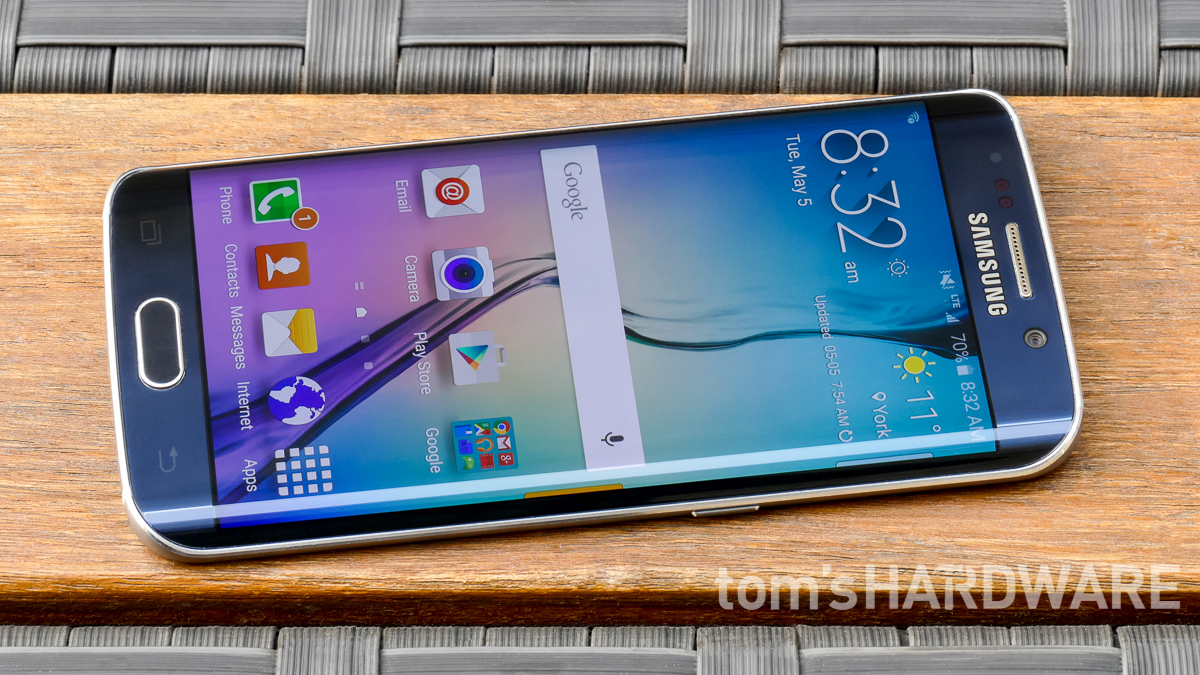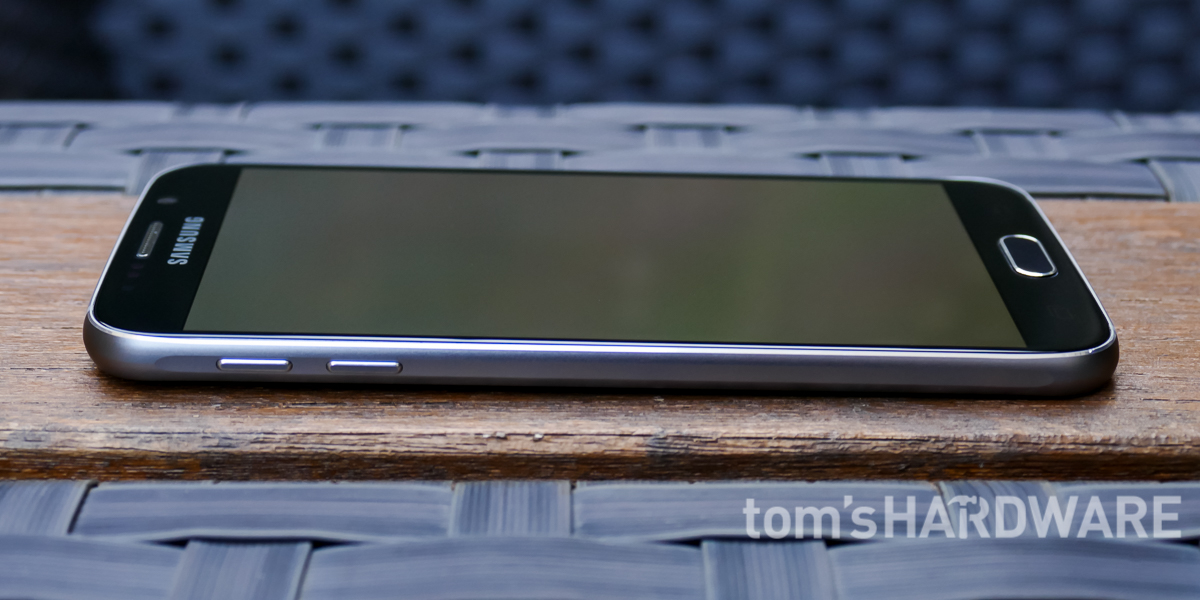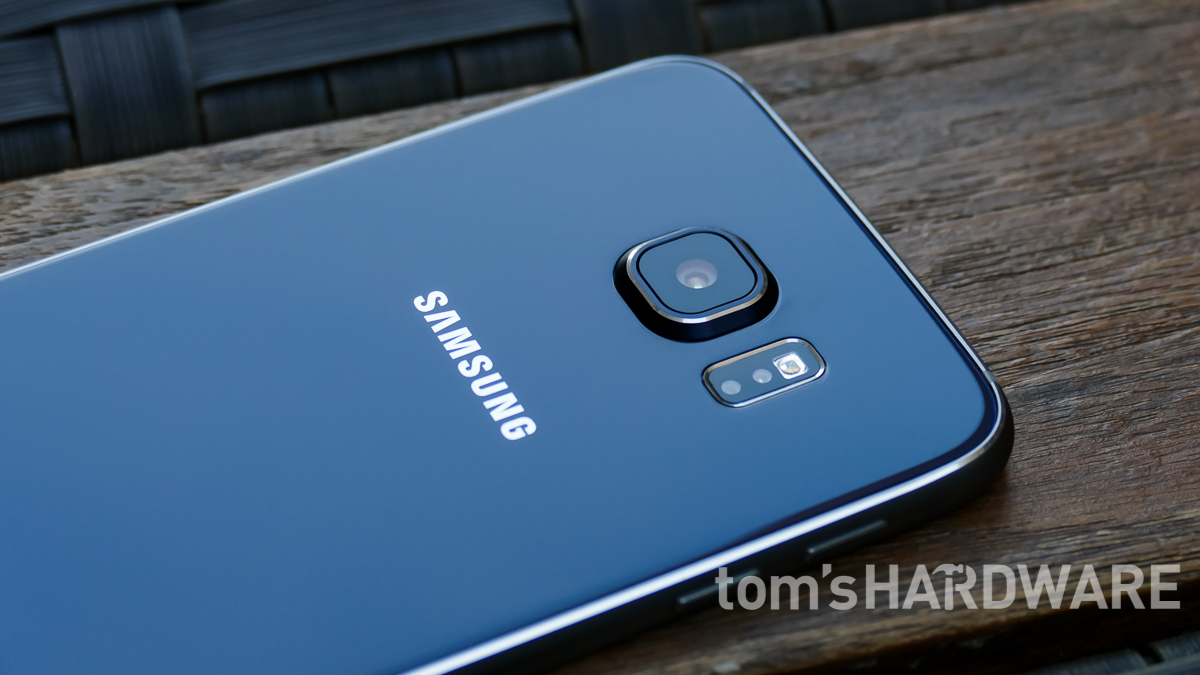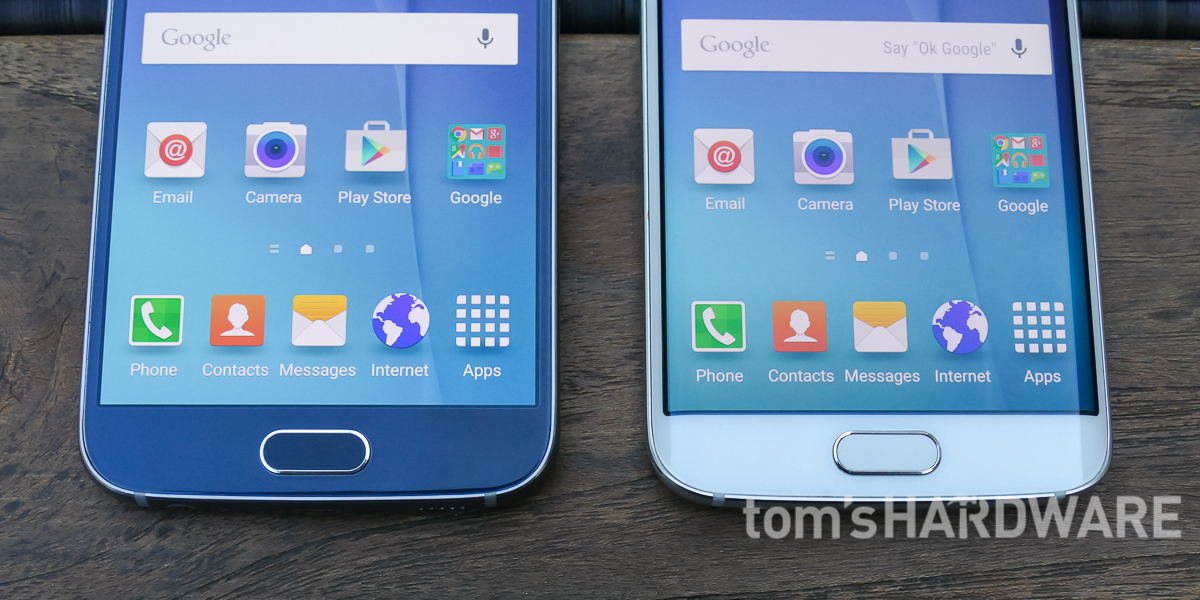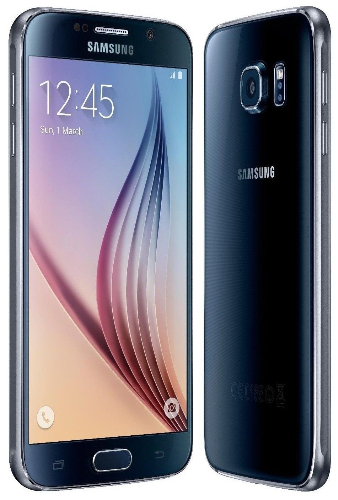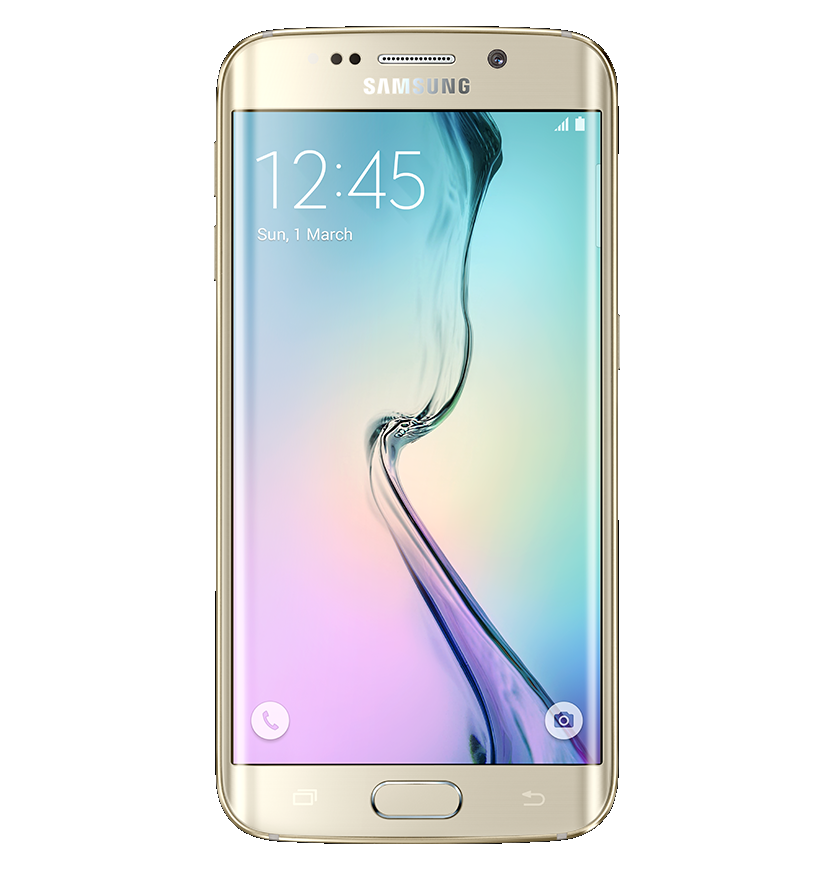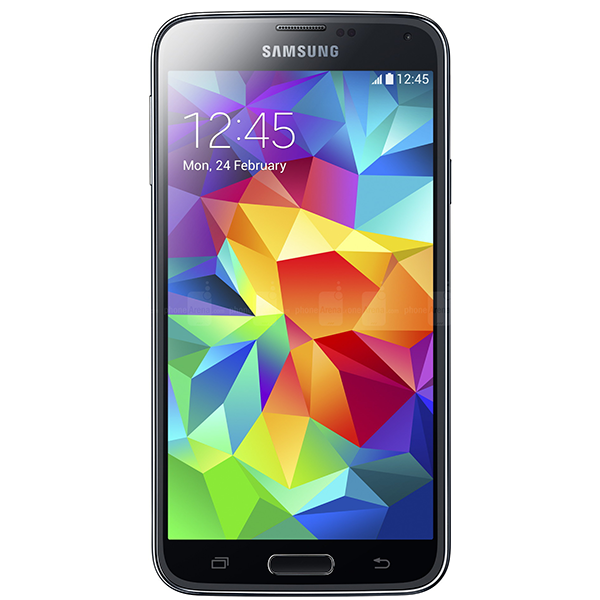Early Verdict
Glass and aluminum are not the only materials that make the stylishly redesigned Galaxy S6 and S6 edge compelling: The silicon inside is what makes these Galaxies special. Its spec sheet will keep us drooling till next year, and its excellent screen, camera, and performance are sure to impress.
Pros
- +
Fingerprint scanner • Performance • Photo quality (Sony sensor) • Screen
Cons
- -
No microSD support • Non-removable battery • Price • Rear camera lottery • Worse battery life than the S5 in heavy workloads
Why you can trust Tom's Hardware
Introduction
For five generations of the Galaxy S, Samsung followed the same formula: throw in lots of features and technology, but hold design in disregard. This formula was wildly successful and helped make Samsung synonymous with Android in smartphones.
The smartphone market is fiercely competitive, however, with OEMs desperate to differentiate their products and gain an advantage. Software used to be a focal point, but Google’s tighter grip on Android makes this increasingly difficult, not to mention the customer backlash against feature bloat. We’ve seen several trends in hardware too: larger screens, more CPU cores, and higher camera and screen pixel densities. But with most of the OEMs buying hardware from the same suppliers, the spec sheets for flagship phones within the same generation end up looking fairly similar. With less room to innovate in these areas, OEMs are focusing their attention on product design and materials, which means the old Galaxy S formula no longer fits the data.
For several quarters now, Samsung has seen its sales and profits shrink. Increased competition in China, the world’s largest smartphone market by volume, is a contributing factor. Local manufacturers, including Huawei, Lenovo, and Xiaomi have been steadily improving the quality and design of their products, while undercutting Samsung on price in the low- to mid-tier segments. According to the IDC, in the past year Samsung has fallen from first to fourth in smartphone market share, with shipments declining 53% in the first quarter of 2015 compared to the same quarter a year ago. Meanwhile, Apple holds the top position, with shipments expanding by 62% over the same period, fueled by the iPhone 6 and 6 Plus.
In addition to the increase in competition at both ends of the price spectrum, Samsung, along with every other smartphone OEM, is battling declining sales in mature markets. There’s fewer and fewer new smartphone customers, and existing owners are holding onto their phones longer, partly because what they have is “good enough” and partly because they have not seen a compelling reason to buy something new.
Starting last year, Samsung began adjusting the coefficients in its product development formula, adapting to the new market conditions by placing an emphasis on product design. The Galaxy Alpha was the first Samsung phone to incorporate an aluminum frame, a feature adopted soon after by the Galaxy Note 4. These designs kept the familiar removable plastic rear cover, a feature that disappeared when the lower priced Galaxy A3 and A5 were released, foreshadowing the new design philosophy for the Galaxy S6.
Samsung’s latest flagship phone looks like a mashup of the iPhone 6, Sony Z3, and Galaxy A5. The front and back are glass like the Z3 and the satin finished frame, with bottom mounted speaker and headphone jack, is similar to the iPhone 6. The chamfered edges and accents are polished like the Galaxy A5, and the front remains unmistakably Samsung.
Along with the new design language and materials, there’s also two different versions: the standard S6 with a flat screen and the S6 edge whose screen curves on both sides, similar to the Galaxy Note Edge. The curved screen gives the S6 edge a unique look and enhances the user experience in an emotional rather than practical way.
Get Tom's Hardware's best news and in-depth reviews, straight to your inbox.
Radical change tends to polarize opinion, and the S6’s elegant new design is a prime example. Detractors disagree with Samsung’s decision to elevate form over function by eliminating useful features such as a removable battery, expandable storage, and environmental protection, features which attracted many buyers to the Galaxy S brand and created a group of loyal fans who are now frustrated they no longer have a clear upgrade path.
The loss of these features will disqualify the S6 from consideration for many buyers, but for those who can live without them, the latest flagship galaxy phones offer a tantalizing array of technology.
Technical Specifications
MORE: Best Smartphones
MORE: How We Test Smartphones
MORE: All Smartphone Content
Compared to the S5, the Galaxy S6 and S6 edge are just slightly taller but 2mm narrower. With the move to aluminum, the S6 is an imperceptible 7g lighter than the S5, and the S6 edge is a just-noticeable 13g lighter; most of this weight reduction comes from the thinner profile and smaller battery, and makes the HTC One (M9) feel heavy by comparison.
There are now three different internal storage capacity options: 32GB, 64GB, and 128GB. The larger capacity options are a necessity since the ability to supplement the internal NAND via SD cards has been eliminated. At least Samsung made the base option 32GB instead of the ridiculous 16GB like the iPhone 6.
Cellular
| Model Number | SM-G920ASM-G925A | SM-G920TSM-G925T | SM-G920W8SM-G925W8 | SM-G920PSM-G925P | SM-G920RSM-G925R | SM-G920VSM-G925V |
|---|---|---|---|---|---|---|
| Carriers | AT&T | T-Mobile | Bell, Eastlink, Fido, Koodo, Rogers, SaskTel, Telus, Videotron, Virgin Mobile, Wind Mobile | Sprint | U.S. Cellular | Verizon |
| Baseband | Samsung Shannon 333 | Qualcomm MDM9635M | ||||
| RF Transceiver | Samsung Shannon 928 | Qualcomm WTR3925 ? | ||||
| RF ICs | Samsung Shannon 710 (envelope tracker) + Skyworks SKY13415 (antenna switch) + Skyworks SKY78042 | ? | ||||
| LTE | 1 / 2 / 3 / 4 / 5 / 7 / 8 / 17 / 20 | 1 / 2 / 3 / 4 / 5 / 7 / 12 / 17 / 20 | 1 / 2 / 3 / 4 / 5 / 7 / 12 / 13 / 17 / 20 | 2 / 4 / 5 / 12 / 25 / 26 / 41 | 2 / 4 / 5 / 12 | 2 / 3 / 4 / 5 / 7 / 13 |
| GSM | 850/900/ 1800/1900 MHz | 850/900/ 1800/1900 MHz | 850/900/ 1800/1900 MHz | 850/900/ 1800/1900 MHz | ✗ | 850/900/ 1800/1900 MHz |
| CDMA2000 | ✗ | ✗ | ✗ | 0/1/10 | 0/1 | 0/1 |
| WCDMA | 1/2/5 | 1/2/4/5 | 1/2/4/5 | 1/2/5/8 | ✗ | 1/2/5/8 |
Samsung continues its tradition of offering a mind numbing array of model numbers, each catering to regional or carrier specific frequency band requirements. Different models also see some variation in silicon as well, particularly with baseband and RF chips, although there seems to be fewer permutations than what we saw in the Galaxy Note 4.
Samsung’s own Shannon 333 baseband and Shannon 928 RF transceiver powers all of the GSM based models. The 333 is a Category 6 LTE modem offering 300 Mb/s down and 50 Mb/s up with carrier aggregation. It incorporates most radio modes, including GSM/EDGE, UMTS (WCDMA, TD-SCDMA), and LTE (LTE-FDD, LTE-TDD), but lacks support for CDMA2000. This is why we see Qualcomm’s MDM9635M powering the models for Sprint, U.S. Cellular, and Verizon.
The MDM9635M is a fourth-generation Category 6 LTE modem built on a 20nm process, and supports all of the 3GPP Release 11 mandatory features. This baseband is likely paired with Qualcomm’s WTR3925 RF transceiver, which is the first single-chip solution from Qualcomm to support all of the 3GPP approved carrier aggregation band combinations. Without performing a teardown, we cannot say what other chips are used in the RF front-end for the Qualcomm based models.
-
LordConrad Considering that Samsung's AMOLED screens have 30% fewer subpixels than other screen types, the 33% pixel increase in the S6 should make it roughly equal to the 1080p screens from other manufacturers.Reply
I'm tired of Samsung trying to claim a higher pixel count when they don't even use the same pixel structure as everyone else. -
blackmagnum If Samsung doesn't release the latest Galaxy product, what benchmark would Apple compare its new iPhone with then? ...can't be LG, Motorola or HTC.Reply -
zodiacfml Battery testing and results doesn't seem to give useful information. There should be a test for Wi-Fi and LTE testing just to keep it close real world usage.Reply
Unfortunately for 3D gaming, the S6 should remain plugged in. This reminds me of the also slim Nexus 5 with good performance in all corners but kills the battery too fast for use as portable gaming device. I guess that's where affordable external battery banks come in. -
Reaver192 I cannot figure out which camera is in my phone???? I did a search or the file“/sys/devices/virtual/camera/rear/rear_camtype” and got no results in the file manager app I downloaded. I have a verizon s6(non-edge) I don't know why I even care but I really want to know for some reason which sensor is in my phone????? Any advice/ : )Reply -
darkchazz ReplyConsidering that Samsung's AMOLED screens have 30% fewer subpixels than other screen types, the 33% pixel increase in the S6 should make it roughly equal to the 1080p screens from other manufacturers.
Exactly!
I'm tired of Samsung trying to claim a higher pixel count when they don't even use the same pixel structure as everyone else.
This reminds me of the nexus 6.
moto/google market its display as an incredibly sharp 1440p AMOLED panel, when in reality its total number of pixels is less than that of the nexus 5's 1080p LCD. -
alex davies ReplyI cannot figure out which camera is in my phone???? I did a search or the file“/sys/devices/virtual/camera/rear/rear_camtype” and got no results in the file manager app I downloaded. I have a verizon s6(non-edge) I don't know why I even care but I really want to know for some reason which sensor is in my phone????? Any advice/ : )
I just tried an alternate method on the Canadian S6 I have. Dial *#34971539# and in the menu that comes up hit the 'ISP VER CHECK' option and pop-up should come up with the sensor info. I am not sure if this works for the Verizon S6. -
MobileEditor <quote>I cannot figure out which camera is in my phone???? I did a search or the file“/sys/devices/virtual/camera/rear/rear_camtype” and got no results in the file manager app I downloaded.</quote>Reply
You can try the method Alex pointed out if you are still using the 5.0.2 firmware. This has been removed in the 5.1.1 update (at least for T-Mo). Some file manager apps may not let you see the root filesystem. You can try ES File Explorer as an alternative.
- Matt Humrick, Mobile Editor, Tom's Hardware -
MobileEditor ReplyI just got a Verizon Galaxy S6 a few days ago. So far the battery life has been so poor that I'm considering switching to something else. From what I've been reading, it appears that the S6 has issues with how much power it is trying to drive to the wireless connections at a given time, causing excess battery drain even with the screen off.
Matt, did you experience any unusual battery behavior during your testing?
I did not experience excessive power drain related to wireless activity, but I'm on a different network (T-Mo), in a different area, with a different usage pattern, and even a different baseband. So my experience won't mean much for you.
I did read an article (forget where) showing that the Samsung RF components used more power than the Qualcomm equivalents. Since the Verizon model uses the Qualcomm components, I'm surprised you're seeing excessive power use. Did you switch carriers when you got the S6?
This could be a software configuration issue. How many different apps do you have that get/receive info from the Internet? How aggressively are they fetching data? Setting email, facebook, twitter, etc. to fetch data every 30s, for example, would keep your radios powered up and drain the battery more quickly. Look at the following:
1) Settings->Data usage to see which apps are consuming the most data
2) Settings->Battery->Battery Usage to see what's using the most power
3) Settings->Battery->Detail to manage which apps are running and to check the "Abnormal Battery Usage" tab.
You might try disabling messaging/social media apps or at least dialing back the fetch policy to at least 30mins for each as a test.
- Matt Humrick, Mobile Editor, Tom's Hardware -
cknobman TouchWiz still a memory hogging piece of trash.Reply
And Samsung wonders why they keep losing market share, idiots. -
Vlad Rose Dumbest move they did was remove the microSD card expansion. At least their Note has it still. Once they remove it from the Note line as well, it will be the last Samsung I own. It was the biggest reason why I chose them over getting the same thing as my wife's iPhone. I gave up FaceTime so that I could have music for work (and use skype instead).Reply
